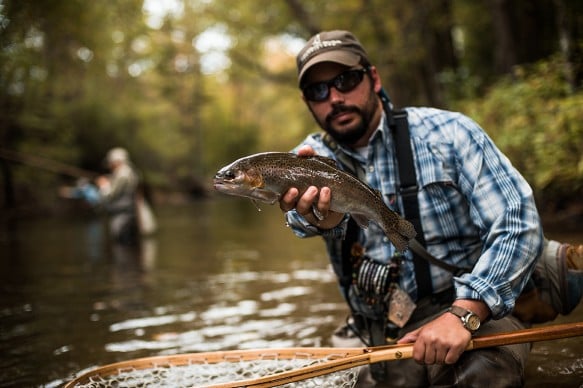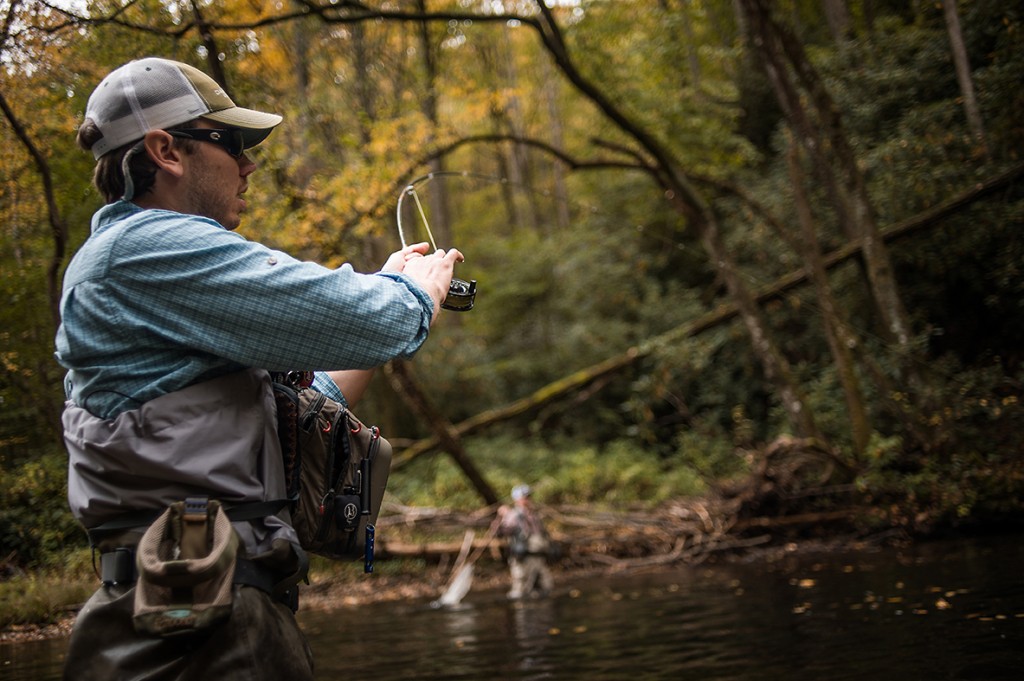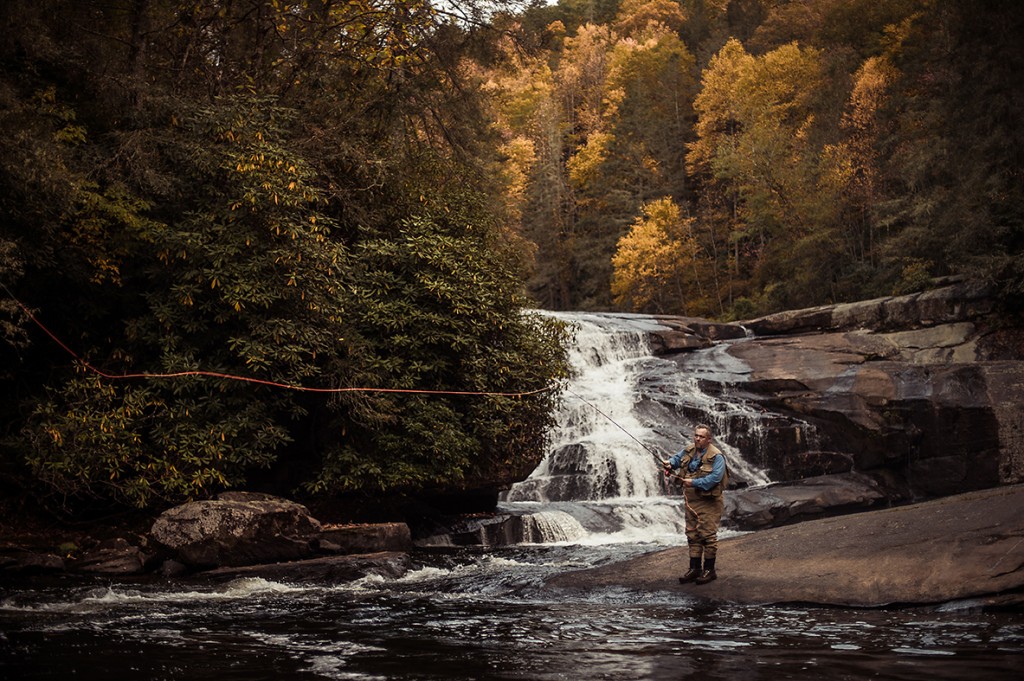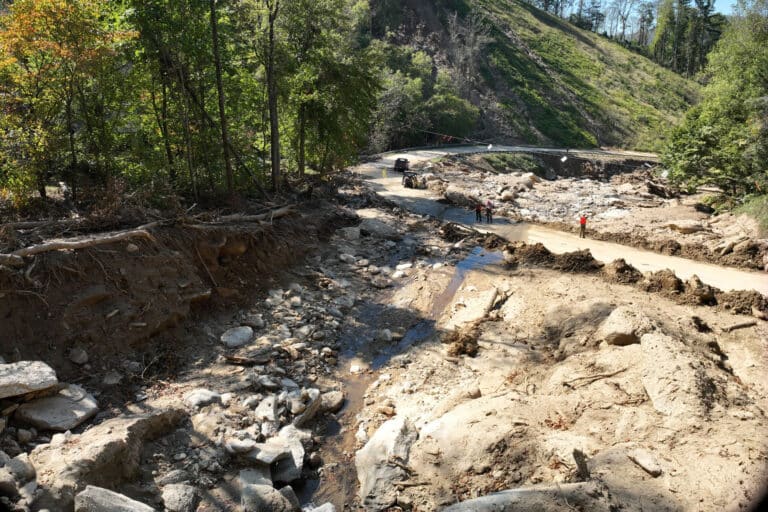Delayed Harvest—it’s one of those terms you’re almost guaranteed to hear if you hang around fly fishing anglers in the Southeast and Mid-Atlantic during the cooler fall months.
It refers to a time of year, usually starting in October and running into the month of June, when trout fisheries are heavily stocked and strict “catch and release” rules are implemented. For novice anglers it can be one of the best times to get out on the water and test your skills in an environment where fish are plentiful and competition from bait fisherman is nonexistent.
We caught up with Walker Parrot, a guide with Davidson River Outfitters in Brevard, North Carolina, to pick his brain about fishing delayed harvest streams in the fall and how he takes advantage of this exciting time of year.
BRO: What exactly is a delayed harvest stream?
Parrott: Delayed harvest is a program that hosts great fishing for both sides of the trout angling world—anglers that want to keep fish, and the angler that wants to practice catch and release. Here in North Carolina, October 1 through the first Saturday in June is one of the most anticipated fishing seasons of the year. This is when delayed harvest rivers are ruled as single hook, artificial, catch and release only. It affords fly fisherman the opportunity to hone their craft without competition and pressure from live bait fisherman.
BRO: How long does it typically last?
Parrott: Catch and release only delayed harvest seasons typically run from October to late May or early June.
BRO: In what parts of the country will you find delayed harvest fisheries?
Parrott: Delayed harvest rivers are mostly designated throughout the Southeast and Mid-Atlantic where water temperatures allow for heavy stocking in early fall.
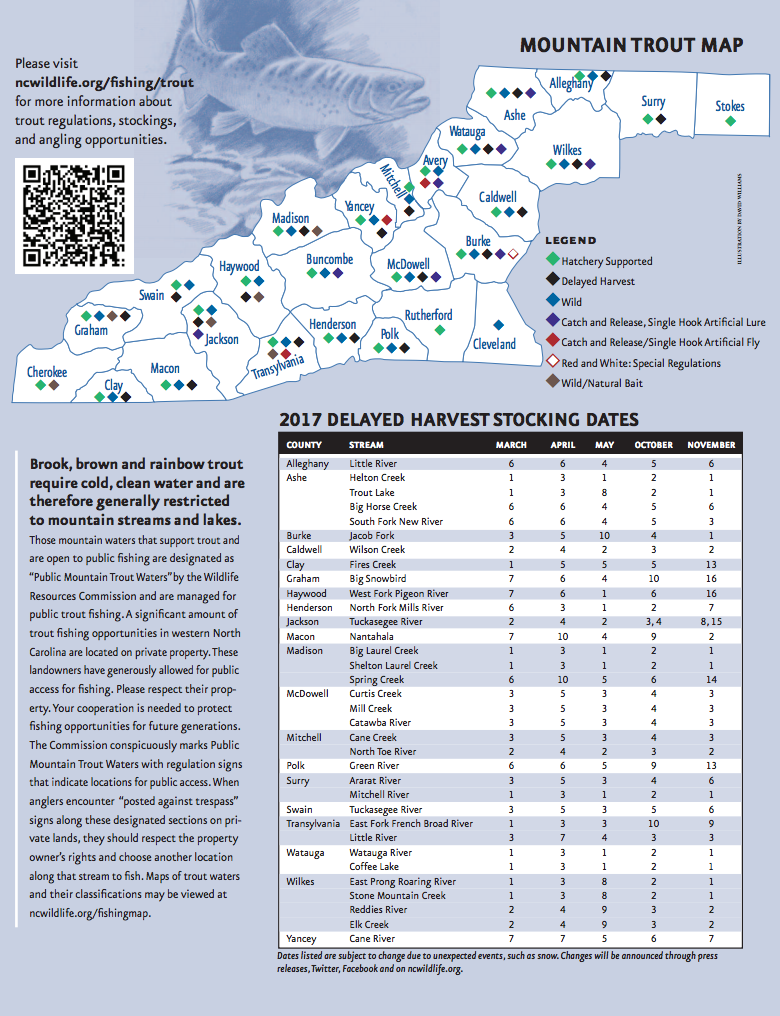
BRO: When is the best time of year to hit the delayed harvest streams?
Parrott: Right now! My favorite times to fish delayed harvest streams would be fall and all of winter. Winter has less crowds, and cooler water temps, both of which trout like.
BRO: What’s your go to delayed harvest waterway?
Parrott: I like North Mills River here in Western North Carolina. It’s my favorite delayed harvest river because of the remoteness and the hardwood bottoms, and the fact that it’s within the national forest makes for less crowds.
BRO: Any go to patterns or particular flies you like to use when going after delayed harvest trout?
Parrott: Delayed harvest fly patterns are usually referred to as ‘Junk Food.’ They include eggs, worms, squirmies, etc. These patterns work great during the first few days of stocking, but as the fish get stepped on, poked, fished at, and hooked for a few weeks, they tend to get smarter. Once they start getting pressured and fished over I switch to Pheasant Tails, Zebras, and Soft Hackles in the size range of 16-20.
BRO: Are barbed hooks allowed on delayed harvest streams?
Parrott: In North Carolina barbed hooks are allowed but barbless is always recommended.
BRO: Would you rather spend a day wading or floating a delayed harvest river?
Parrott: Wading and floating are both great, but floating gives us the chance to get away from the crowds and see more of the river.
BRO: What kind of advice would you give a first time delayed harvest angler?
Parrott: A first timer should stop in at their local fly shop and get the skinny on regulations and the best local spots. The purists among us sometimes rag on delayed harvest stream, claiming that they take the sport out of fly fishing. But in my opinion, delayed harvest programs are great for beginners, experts, and even for fishing guides. Even the most experienced and trout-savvy angler can find a glimmer of fun in a delayed harvest stream.
—
Check out some of the best delayed harvest streams in your area.
North Carolina
Nantahala River, from White Oak Creek to the Nantahala hydro-power discharge canal.
Watagua River within the boundaries of South Mountain State Park.
North Mills River, Henderson County
East Prong of the Roaring River, Wilkes County
More details here.
Georgia
Chattahoochee River, Cobb and Fulton Counties
Toccoa River, Fannin County
Amicalola Creek, Dawson County
Smith Creek, White County
Chattooga River, Rabun County
More details here.
Virginia
South River, Waynesboro Area
Jackson River, Bath County
Holliday Creek, Appomattox and Buckingham Counties
More info here.
[divider]About Walker[/divider]
Growing up on the South Carolina coast, Walker Parrott was introduced to fishing as a child, catching Redfish,Trout, Jacks and other inshore species. While completing high school in Sandpoint Idaho, Walker was introduced to Mountain Trout fishing. He wanted to stay in the mountains, but live in the Southeast. Now he teaches his clients the ways of the Southern Appalachian trout at Davidson River Outfitters. You can book a trip with Walker or any of the other qualified Davidson River Outfitter guides here.
